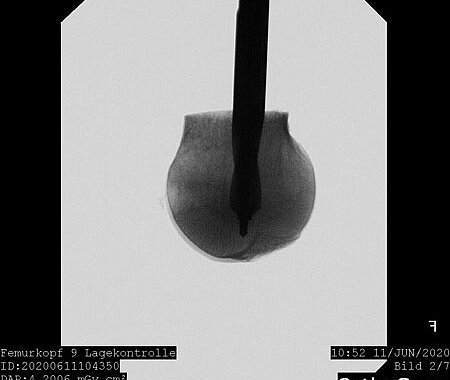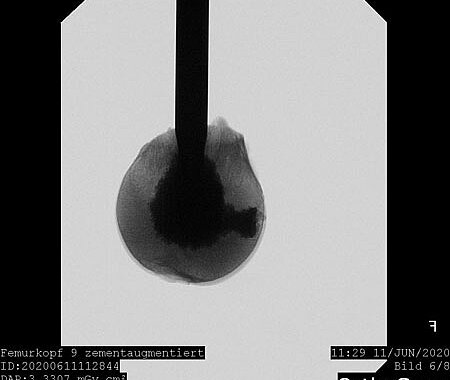Bone defects in trauma surgery often occur in cases of defect injuries – e.g. open fractures of the lower leg – or fractures close to joints. Filling of the defect is often essential to prevent fracture fragments from subsequent sinking under stress. In the case of larger defects, it is often not possible to strain the limb – e.g. the leg – without bridging the bone defect.
Small defects can usually be filled by using bone autografts, which means transferring bone from one anatomical site like the iliac crest to another in the same patient. Replacement materials have the advantage of neither weakening the healthy bone nor bringing the surgical risks associated with that process.
Our research currently focuses on optimizing mineral bone cements for clinical use. The necessary basic components for calcium phosphate and magnesium phosphate cements are combined in such a way that the desired properties – such as sufficient viscosity for injection and subsequent hardening with high load-bearing capacity – are optimized.




